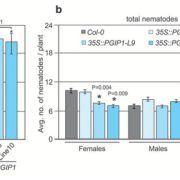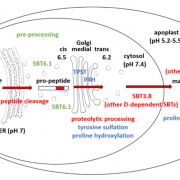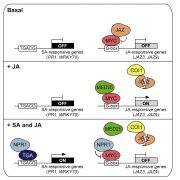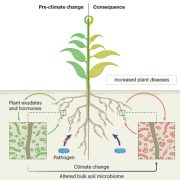Perspective: Exposing belowground plant communication
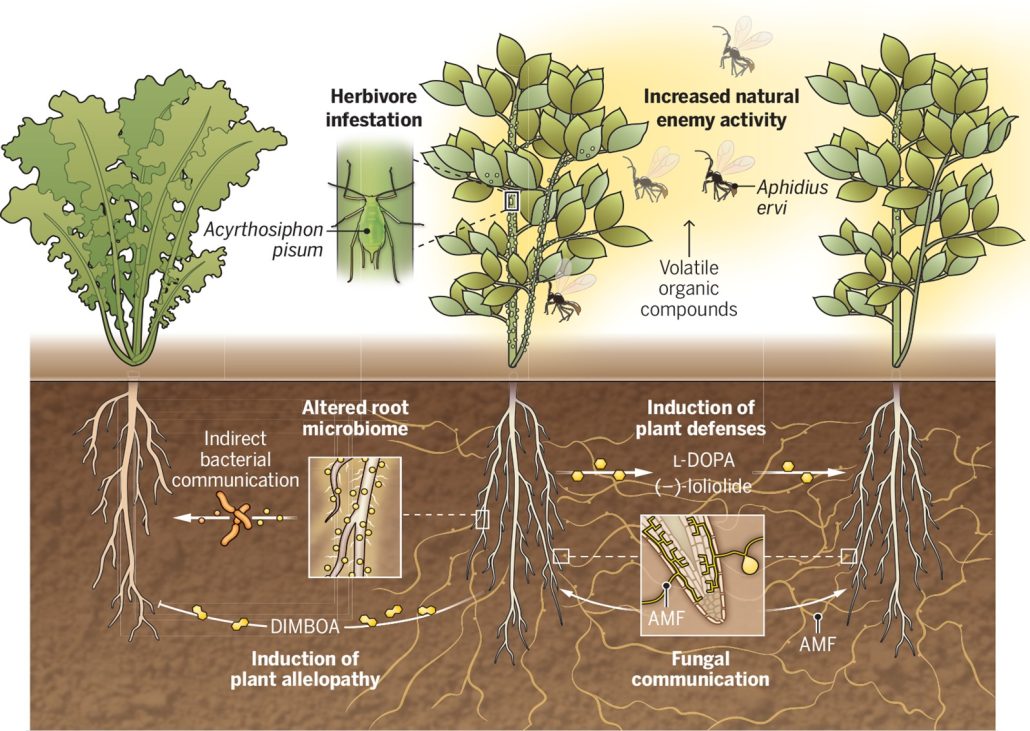 Plants possess a fascinating ability to communicate with each other through a complex system of chemical signals. Aboveground, they use airborne volatile signals to attract predatory insects, prime defenses in neighbors, facilitate nutrient transfer, and promote plant interactions. However, less is known about the chemical signaling that goes on underground. In this Perspective article, Guerrieri and Rasmann highlight what is known and unknown about belowground plant communication. As they suggest, soil matrix communication provides an efficient way to rapidly respond to biotic and abiotic stresses and can contribute to ecosystem processes. The authors provide examples of ways that root exudates communicate important information between organisms. Plants can also communicate through mycorrhizal networks to transfer available resources and signal between interconnected plants. However, understanding belowground plant communication calls for methodological advances, including sampling and characterizing root exudates in natural environments. Untargeted metabolomics and machine learning algorithms can detect molecules produced by roots under different stress conditions. Understanding and applying the potential of root exudates can be a game changer for sustainable agriculture and cost-effective ecosystem management. (Summary by Maneesh Lingwan, @LingwanManeesh) Science 10.1126/science.adk1412
Plants possess a fascinating ability to communicate with each other through a complex system of chemical signals. Aboveground, they use airborne volatile signals to attract predatory insects, prime defenses in neighbors, facilitate nutrient transfer, and promote plant interactions. However, less is known about the chemical signaling that goes on underground. In this Perspective article, Guerrieri and Rasmann highlight what is known and unknown about belowground plant communication. As they suggest, soil matrix communication provides an efficient way to rapidly respond to biotic and abiotic stresses and can contribute to ecosystem processes. The authors provide examples of ways that root exudates communicate important information between organisms. Plants can also communicate through mycorrhizal networks to transfer available resources and signal between interconnected plants. However, understanding belowground plant communication calls for methodological advances, including sampling and characterizing root exudates in natural environments. Untargeted metabolomics and machine learning algorithms can detect molecules produced by roots under different stress conditions. Understanding and applying the potential of root exudates can be a game changer for sustainable agriculture and cost-effective ecosystem management. (Summary by Maneesh Lingwan, @LingwanManeesh) Science 10.1126/science.adk1412


